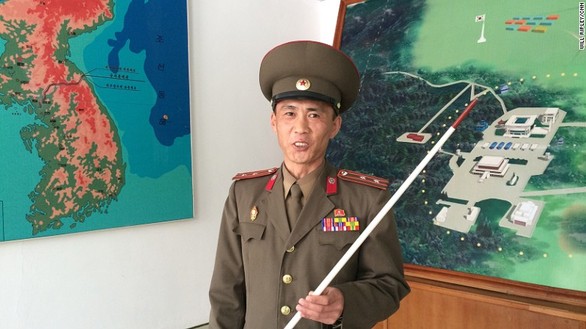

This story may remind American DMZ vets of various detection systems they used. Here’s video of the AN/TPS-25 Ground Surveillance Radar. Share your experiences with detection technology below…
From NK News: “The South Korean military has signed a contract to develop unmanned surveillance sensors aimed at strengthening surveillance capabilities in the DMZ and the surrounding area.
While the development of these sensors would help to ensure the safety of troops stationed near the DMZ, a military expert said that such an effort must be undertaken in parallel with efforts to lower tensions with North Korea.
Hanwha Thales, a domestic defense manufacturer, has signed a 3.6 billion-won ($3.1-million) contract to help in the development of these sensors with South Korea’s Defense Acquisition Program Administration (DAPA).
A DAPA representative told NK News that the sensors will greatly improve South Korea’s capacity to detect North Korean troops attempting to infiltrate and potentially endanger South Korean lives.”
See information and video below of the North Korean attack the prompted this move by the South…

Did North Korea Infiltrate Agents into the US to Attack Nuke Plants & Cities? Can Pyongyang Launch Terror Attacks in America? Who Is the American Serviceman Who Instructed North Korean Special Forces? See The Documents We Uncovered Here
DMZ Tours, “Dark Tourism” and the State of North/South Relations
Interesting analysis on the state of DMZ tours — “a dangerous zoo” — and their relation to South Korean attitudes toward reunification… The article reports that DMZ tours began in 1963 — do any DMZ War readers remember them back then or before? One thing missing in this report, and a factor that probably played a role in those early tours, was the desire of South Korean residents (as opposed to fast-spending foreign tourists) to visit the ‘Z to see their former homeland where loved ones often still lived, and/or honor their ancestors buried there.
“In 2006, South Korea rebranded the DMZ the Peace and Life Zone (PLZ).Untouched for decades, the area’s biodiversity and eco-credentials are now being pushed to the fore. Just pause and read that again: Peace and Life. In reference to what is effectively a scar severing the shared reality of a once united country; the last remnant of the Cold War that has divided families for generations and created one of the most extreme states of inequality on a national scale. As public relations go, it’s pretty audacious, like trying to reposition climate change as a way to get a better tan.” Read the rest here.
Korean DMZ, November 1974: First North Korean Infiltration Tunnel Discovered Presidents Meet

In Nov. 1974, a South Korean DMZ patrol noticed steam rising from the ground. Investigators soon uncovered a North Korean tunnel leading to the South. U.S. Navy Commander Robert Ballinger from the UN Command’s Armistice Affairs Division (who had been awarded the Silver Star for heroism in Vietnam years before) and a South Korean officer were killed by a DPRK booby-trap while examining the structure. Three more tunnels would be found in coming years; others are believed to exist. (North Korean tunnel experts have also been suspected of helping construct tunnels in the Middle East for terrorists to attack Israel, see the story on our sister site here.)
Days later, South Korean President Park Chung-hee and U.S. President Gerald Ford (along with Secretary of State Henry Kissinger), met in the Korean “Blue House” to discuss the security situation and other issues (Park had narrowly escaped a North Korean assassination attempt months before, see video here). Read part of the declassified transcript of the meeting below.
Despite the grim circumstances, Park and Kissinger managed to joke about what might be found while digging near the tunnel — check out the last page.







Does President Obama Want to Strip GIs in Korea of their Defensive Land Mines?
White House Avoids Detonating Korean Land Mine Story — for Now. Learn more about the issue at our Land Mine Korea page.




